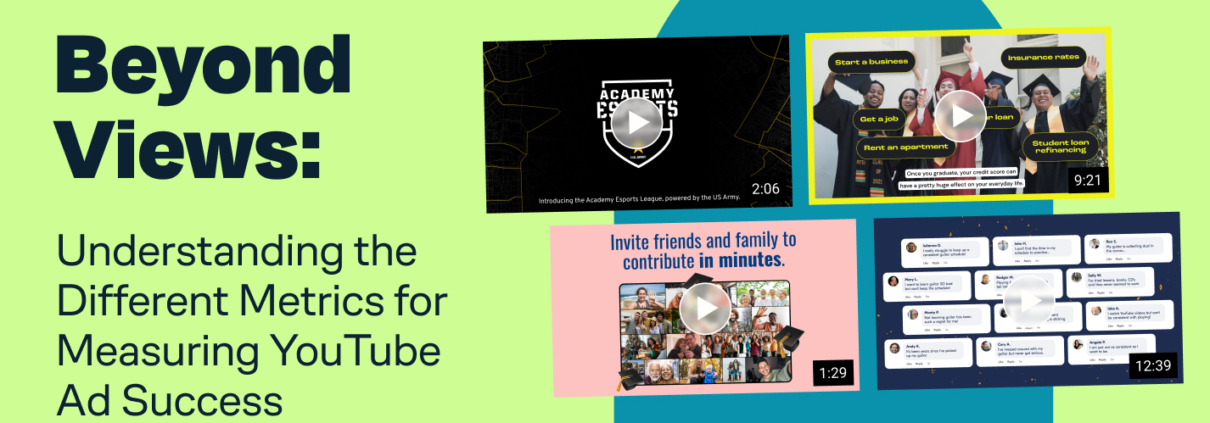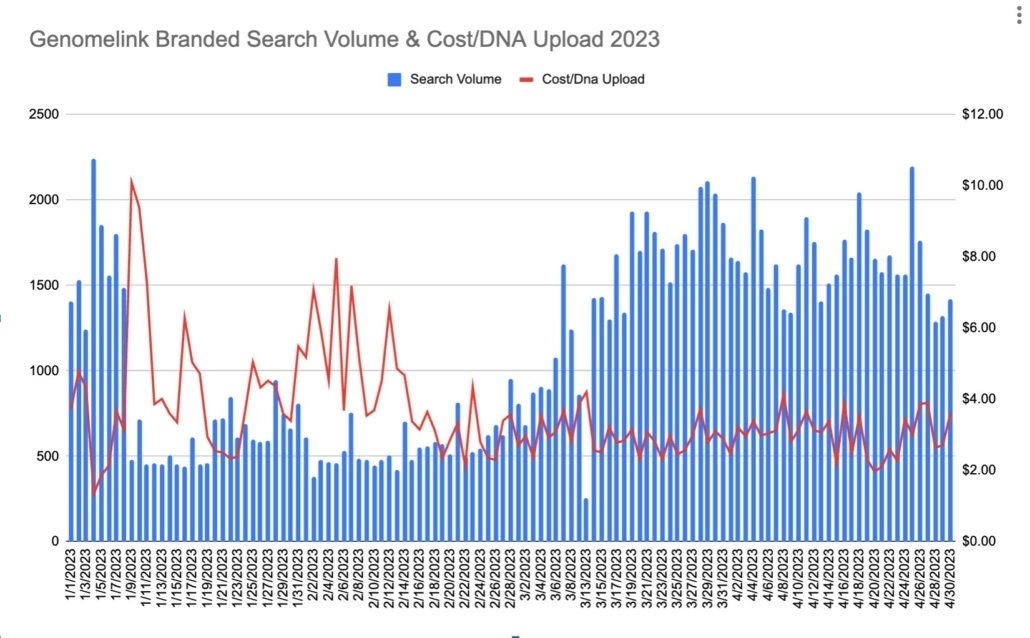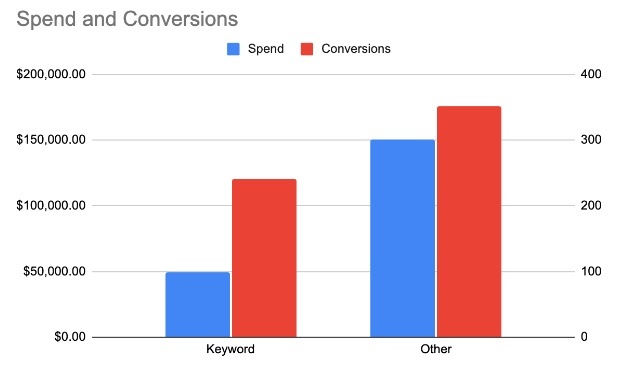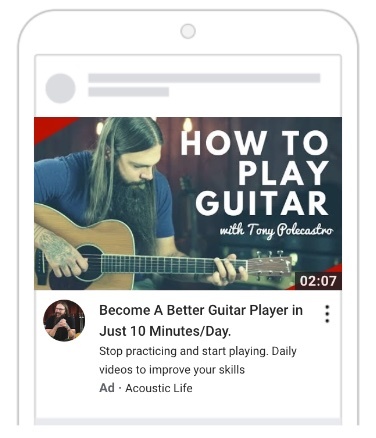Beyond Views: Understanding the Different Metrics for Measuring YouTube Ad Success
With over 2 billion monthly active users and over 1 billion hours of video watched daily, YouTube offers an enormous potential audience for brands to reach. The platform’s global reach, targeting capabilities, and diverse content make it a highly viable ad channel for brands of all sizes and industries.
One of the main benefits of advertising on YouTube is the platform’s advanced targeting options. Brands can reach their desired audience accurately and efficiently with sophisticated targeting features like demographic, location, interest, and custom audience targeting. YouTube allows targeting based on user behavior, including engagement with brand content or similar videos.
While advertising on YouTube offers a wide range of benefits, one of the main challenges is measuring the impact of your campaigns. Unlike traditional forms of advertising, measuring the effectiveness of YouTube Ad campaigns requires a more nuanced approach. It involves tracking a variety of metrics and considering factors such as audience engagement and brand perception. Additionally, the complexity of YouTube’s algorithms and ad targeting options can make it difficult to accurately gauge the success of a campaign. As a result, businesses must take a strategic approach to measuring the impact of their campaigns, leveraging a range of quantitative and qualitative YouTube ad metrics to gain a comprehensive understanding of their performance.
This post will provide guidance on how to set up your YouTube campaigns for success, and explore various measurement frameworks to validate the results based on our experience running hundreds of YouTube campaigns.
What role does YouTube play in your funnel?
YouTube advertising provides an array of campaign objectives that cater to diverse marketing goals. Before using YouTube for advertising, the most important decision for any advertiser is to choose whether to leverage the platform for driving top-of-the-funnel brand awareness, bottom-of-the-funnel conversions, or both. Utilizing every stage of the funnel for any growth marketing strategy is key to success and Youtube Ads are no different.
Using YouTube for top of the funnel campaigns
Investing in top of the funnel (TOFU) ad campaigns is important for countless reasons.
First, TOFU campaigns focus on building brand awareness and generating interest in your products or services with a specific audience. By focusing on TOFU campaigns, brands can increase website visibility, brand awareness, and organic traffic. This is particularly important for startups or scaleups with a limited customer base.
Secondly, investing in TOFU campaigns can help brands to build a larger retargeting audience for more focused campaigns later on. By capturing the attention of a large number of people with your TOFU ads, you can then retarget those who have shown interest in your brand or products with more specific and targeted messaging. This can lead to higher conversion rates and a better return on investment for your overall ad spend.
It is also important to note that Youtube Ads can be very cost efficient. Average cost per view can be as low as $0.02. This means that you can receive thousands of views with a limited budget, making this a viable platform for all business types. Youtube Ad costs vary between industries, but no matter the business, it is an effective channel at reaching virtually unlimited eyeballs.
Leveraging YouTube to drive large-scale brand awareness is a worthwhile strategy provided that:
- Your target audience can be effectively reached on the platform through targeting options such as In-Market Audiences, Youtube Video Content, and Remarketing Lists
- You possess high quality video assets that are suitable for YouTube’s format
- You have a well-rounded media mix that complements your YouTube advertising efforts
Using YouTube to drive last-click conversions and view thru conversions
Investing in bottom of the funnel (BOFU) ad campaigns is important for businesses to drive revenue, build customer loyalty, and gain insights into their customers’ behavior. BOFU campaigns target audiences who are already familiar with your brand and have shown intent to purchase your product or service.
By providing targeted messaging and incentives to those who have already shown interest in your product or service, BOFU campaigns can help push them towards making a purchase and ultimately drive revenue. Targeting audiences who have shown intent to purchase allows businesses to maximize their ROAS and grow their customer base.
This is where Retargeting audiences come in most effective. Users who have been to your site but have not converted yet are a great audience to tap into. They tend to be higher intent, familiar with your brand, and ready to buy! These users also are more likely to be the most cost effective when looking at CPCs, CPM, or CPV.
In addition to boosting results, BOFU campaigns also help businesses to better understand their customers’ behavior and preferences. By analyzing the data from these campaigns, businesses can gain valuable insights into what drives their customers to convert, what barriers they face in the purchase process, and how to improve the overall customer experience.
Leveraging YouTube Ads to drive conversions can be a viable strategy provided that:
- Your target audience can be effectively reached on the platform through targeting options
- You possess video assets that are suitable for YouTube’s format
- You have other channels actively driving awareness for the brand
- You can achieve results within you CPA targe
Measuring success with different YouTube ad metrics
Once you’ve decided how you want to use YouTube strategically and the role it will play in your media mix, you need a measurement framework that allows you to validate the success of your efforts. Measurement is not a one size fits all approach. There are countless ways to prove the success of your campaigns that do not rely on the standard data available in the Google Ads platform. Let’s take a look at how we do this with different campaign types.
Measuring impact of Brand Awareness campaigns on Youtube
When it comes to measuring the success of a brand campaign, performance can be challenging to hone in on because it involves tracking intangible factors such as brand awareness, perception, and loyalty. However, there are still several metrics and techniques that businesses can use to gauge the impact of their brand campaigns. Here are some methods to consider:
- Surveys: Conducting customer surveys before and after the campaign can help measure changes in brand awareness and perception. You can use metrics such as aided and unaided recall, brand favorability, and purchase intent to measure the effectiveness of the campaign.
- Correlation between branded search volume / direct traffic: While brand campaigns are not directly focused on driving sales, an increase in traffic and conversions during the campaign on organic, direct, or paid branded search can indicate its effectiveness in building brand equity and loyalty.
- Cost per acquisition: Measuring the cost per acquisition of new customers following a brand campaign can provide an indication of its impact on driving customer acquisition.
Ultimately, measuring the success of a brand campaign involves a combination of qualitative and quantitative metrics that track changes in brand awareness, perception, and customer behavior. By utilizing these methods, businesses can effectively gauge the effectiveness of their brand campaigns and validate the success of these efforts.
Here are two specific ways we’ve measured the success of brand campaigns on YouTube using elements of the framework above.
Implementing post-purchase surveys with Akko
One way to help prove out the success of a Youtube Ad Campaign is by conducting a post purchase survey. Something that asks “Where did you hear about us?” is the most common version of this type of survey that we’ve all taken while online shopping. This was our strategy for the phone insurance company, Akko.
We ran Youtube Ads for Akko both before and after this survey was put into place on the site. This made it really easy to measure the success of these campaigns. Sometimes standard attribution doesn’t tell the full story, but flat out asking your customers can! It’s as simple as that. When looking at Youtube CAC numbers for July (before the survey) and then September (using survey results) we were able to see a CAC decrease of over 40%.
Internal reporting was not telling the full story, but the users were. Overwhelmingly, users chose Youtube as their source of information when prompted post purchase. This seemingly simple metric isn’t available in the standard Google Ads or Analytics reporting. Relying on first person data like this signaled to us and company stakeholders that we could continue to run Youtube Ads for much longer than if we didn’t have this information at our disposal.
Scaling Branded search volume with Genomelink
With our partner Genomelink, a DNA service counterpart to the likes of 23andMe, Ancestry, and MyHeritage, we have found Youtube to be one of the most effective channels for all of digital marketing. On a conversion level, we have been able to rival the likes of Search when it comes to CPA, something that is very difficult to do for virtually all industries. CPA has been between $20 – $25 on Youtube and just under $20 for Search. A large win, considering Youtube is focused on Prospecting audiences instead of high intent keywords.
The main success here for Genomelink is not the fantastic conversion metrics. It’s actually the Brand lift that we have seen since launching our Youtube Ads. As mentioned above, measuring Brand search results is a key way to track performance outside of standard Youtube metrics. Here is a chart showing the amazing correlation between Youtube and Genomelink’s Branded Search volume. Can you guess when we launched Youtube?
We saw IMMEDIATE results as soon as Youtube went live as an ad channel. Search volume rose drastically while we continued to lower CPA. Scale AND efficiency. The name of the game. This one chart shows the importance of approaching Youtube Ads with a zoomed out view point. Google Ads metrics wouldn’t be able to easily show the impact of a Youtube Ad as easy as it is to see it when looking granularly at Branded traffic. A cherry on top for this kind of success is that it can have long term effects on Brand Awareness as a whole. Google favors websites with high quality traffic and lots of search volume. It is only up from here.
Maximizing direct traffic volume with Youtube Ads for Koji
We love charts and graphs, so we have another one to show off here for our partner Koji, a digital storefront that makes it easy to sell to your audience through social media. Focusing on a Brand Awareness campaign optimized for efficient reach, we wanted low CPMs to get in front of as many eyeballs as possible targeting our Custom Intent audiences we built around keywords and other factors. Here are the results below after just TWO weeks of performance:
When looking at traffic numbers period over period and month over month, we saw some astonishing results. Both New Users and overall Sessions increased by over 40%. Compared to the previous month we drove 70% additional New Users to the site. These are the exact users we were going after and they came to the site in excess. These are users that are not directly coming to the site via the Youtube Ads. That is why this data is so significant. Youtube helped drive thousands of more users to the site via Organic and Direct channels. This is exactly the kind of results we were looking for.
The buck didn’t stop there. Organic leads saw an 81% increase compared to the average volume for the previous 4 months. We saw both brand lift and conversion lift. Ah conversions! A perfect segway into measuring conversions in Youtube campaigns.
Measuring impact performance campaigns on Youtube
Measuring the success of a conversion campaign is relatively straightforward. Its main goal is to drive specific actions from potential customers, such as making a purchase, filling out a form, or subscribing to a service. Here are some ways to measure the effectiveness of a performance focused campaigns, no matter the industry you’re operating in:
- Conversion rate: The most direct measure of success for a conversion campaign is the conversion rate, which is the percentage of website visitors who complete the desired action. This metric can be tracked using website analytics tools like Google Analytics.
- Cost per conversion: By calculating the cost per conversion, you can evaluate the efficiency of your campaign and optimize your budget accordingly. This metric is calculated by dividing the total cost of the campaign by the number of conversions.
- Return on investment (ROI): Calculating the ROI of your conversion campaign helps you understand how much revenue you generated in relation to the cost of the campaign. To calculate ROI, subtract the cost of the campaign from the revenue generated, then divide that number by the cost of the campaign.
- Customer lifetime value (CLV): By calculating the CLV of customers who converted through your campaign, you can determine the long-term value of your campaign. This metric takes into account the revenue generated by customers over their lifetime with your brand.
Here are two specific ways we’ve measured the success of conversion campaigns on YouTube using core Youtube ad metrics.
Turning Youtube into the most successful Performance campaign for Sabio
YouTube is arguably the most important channel for our partner, Sabio that offers a highly regarded coding bootcamp for people looking to break into the tech space. It drives conversions. High quality conversions that easily compete with every other channel we are active on for Paid Media. Let’s look at the numbers.
Rather than focusing on brand awareness, we’ve tested Video Action campaigns on a variety of prospecting and retargeting audiences to drive applications from YouTube ads.
On the prospecting side, we leaned into using Custom Segment audiences to target Sabio’s competitors’ brand names. We did this to drive clicks at a much lower cost compared to targeting competitors on search. For example, on search campaigns, clicks on competitor keywords in this industry cost over $20 each. But with Youtube Ads, using a Custom Segment audience made up of the same keywords, we are seeing CPCs of just $2.01 in 2023. A tenth of the cost for the same traffic. That’s hard to beat.
This has had further ramifications down funnel, leading to much more affordable CPAs. With a $22 cost per application for 2023, efficiency has drastically improved once shifting additional budgets in Youtube. The average CPA on Google Search for reference is around $100. With drastically cheaper traffic and 1/4th of the cost per application, Youtube continues to dominate for Sabio and there’s no slowing down.
Splitting conversion metrics out by targeting tactic with TAC
Tony’s Acoustic Challenge is a web-based guitar instruction platform that provides its users with daily, bite-sized guitar lesson videos. Designed to take the average dabbler and transform them into an actual guitar player with a redesigned instruction format that doesn’t feel like traditional guitar lessons.
The foundation of any sound YouTube strategy is creative, but an equally important part of the equation is targeting. Finding the most effective way of reaching your target audience depending on your goals. These are the building blocks for effective conversion tracking, scaling, and optimizing.
Historically, Tony’s Acoustic Challenge relied heavily on content keyword targeting, primarily in YouTube Conversion campaigns, which drove a very efficient CPA compared to other campaigns. This accounted for 40% – 50% of the overall conversions coming from this channel. Breaking conversion data down by a targeting tactic is just one key way to measure conversion success on Youtube. Example below:
(all date January – February 2023)
After seeing Google / YouTube discontinue content target for YouTube conversion campaigns in early March 2023, we went back to the drawing board to see what targeting options and campaign types we could use to fill the void left by the removal of content keyword targeting.
Pivoting to YouTube’s in feed video ad type
After testing a handful of different tactics, we began to see traction using the in feed video ad type, which still allows content keyword targeting, but does not allow for an automated, conversion focused bidding strategy. The in-feed video ad serves as a thumbnail on YouTube, It invites users to click to watch the video instead of clicking a Video ad that directs them to an external landing page.
After a brief learning period, we found incredible efficiencies in the ability to target single keywords and to match them up with a thumbnail including that same keyword. For example, a user searches YouTube for “how to play guitar” and then sees the following thumbnail:
Based on this finding, we developed thumbnails for other high value keywords. Then, we built new campaigns, each with a single keyword and corresponding thumbnail:

So how does this all relate to measuring conversion success?
After a learning period in March, we saw this tactic explode in April. Conversion volume stemming from these campaigns increased 429% and CPA dropped 29%. This tactic accounted for 67% of all April YouTube conversions. Again, we saw efficiency AND scale here by tackling conversions in a different way than before. Breaking things down by tactic, keyword, or audience type helps us tell the full measurement story while we are reporting. From there we optimize, test, and scale. Constantly moving forward.
Finding different ways to measure success with YouTube ad metrics
Ultimately, measuring the success of a YouTube ad campaign requires a commitment to data-driven decision making and a willingness to experiment and iterate. With the right focus on key metrics, businesses can successfully measure the impact of their YouTube ad campaigns and achieve their marketing goals.

Chris is a PPC Strategist based in Nashville, Tennessee. When he’s not scaling Google Ads & YouTube campaigns, he enjoys longboarding, tinkering with automation tools, and a little bit of gaming.











